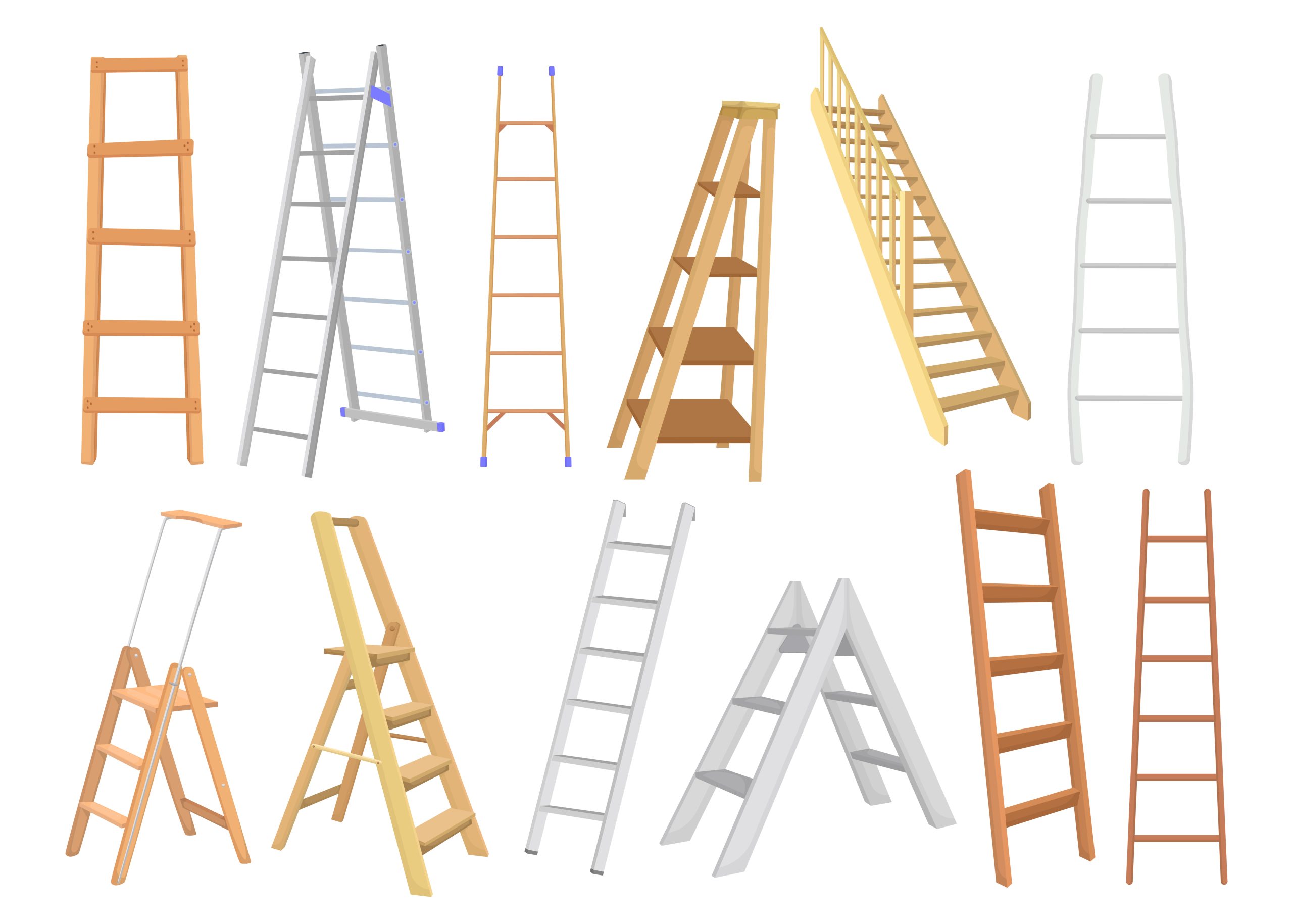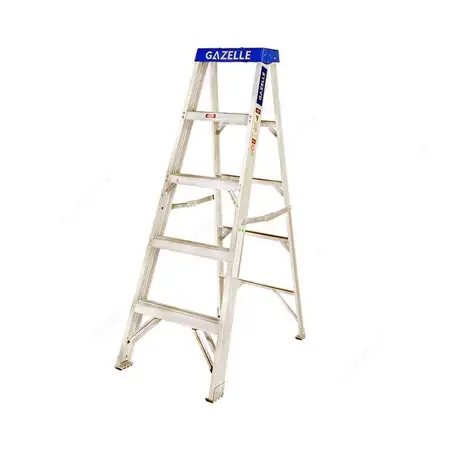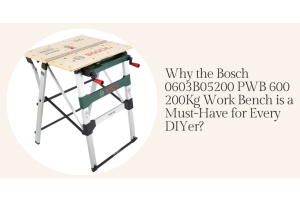Types of Ladders: A Handy Guide for Choosing the Right One for Your Needs ?️

Ladders: A Handy Guide:
Ladders are an essential tool for many different tasks around the house and workplace. From changing a light bulb to painting a house, there's a ladder out there for every job. But with so many different types of ladders available, it can be tough to know which one is right for you. This guide will discuss the different types of ladders and their uses, so you can choose the right one for your needs.
What are Ladders?
A ladder is a portable structure consisting of two or more parallel bars or steps that are connected by rungs. Ladders are used to reach high places that are otherwise difficult or impossible to access. They are an essential tool for many different tasks, from home improvement to construction.
Different Types of Ladders and their Uses
From home maintenance to construction work, ladders are an essential tool. However, not all ladders are created equal, and using the right one for each job is crucial for safety and efficiency. There are several types of ladders available, including step ladders, extension ladders, multi-position ladders, and platform ladders. Each ladder type has its unique features and uses, and understanding them can help you choose the appropriate ladder for your next project. Let us explore the various types of ladders and their uses.
Straight Ladder

Straight ladders are the most basic type of ladder. They are designed to be leaned against a wall or other vertical surface. Straight ladders are typically made of aluminum or wood and come in a variety of lengths, from 6 feet to 40 feet or more.
Straight ladders are commonly used for tasks such as:
- Changing light bulbs
- Cleaning gutters
- Accessing rooftops
- Painting walls
- Repairing roofs
When choosing a straight ladder, it is important to consider the following factors:
- The height you need to reach: Make sure to choose a ladder that is tall enough to reach the desired height.
- The weight of the ladder: Ladders can be heavy, so you need to make sure that you can safely lift and carry the ladder to the desired location.
- The stability of the ladder: The ladder needs to be stable in order to be safe to use. Make sure to choose a ladder that has a wide base and that is made from sturdy materials.
Straight ladders are a versatile tool that can be used for a variety of tasks. With a little care and attention, they can be used safely and effectively.
Step Ladder

Step ladders are self-supporting ladders that do not need to be leaned against a wall or other vertical surface. They have a hinged design that allows them to be opened and closed like a book, with the steps forming the "pages." Step ladders are typically made of aluminum or fiberglass and come in a variety of sizes, from 2 feet to 20 feet or more.
Step ladders are commonly used for tasks such as:
- Painting
- Reaching high shelves
- Changing light bulbs
- Hanging pictures
- Cleaning gutters
When choosing a step ladder, it is important to consider the following factors:
- The height you need to reach: Make sure to choose a ladder that is tall enough to reach the desired height.
- The weight of the ladder: Ladders can be heavy, so you need to make sure that you can safely lift and carry the ladder to the desired location.
- The stability of the ladder: The ladder needs to be stable in order to be safe to use. Make sure to choose a ladder that has a wide base and that is made from sturdy materials.
Step ladders are a versatile tool that can be used for a variety of tasks. With a little care and attention, they can be used safely and effectively.
Here are some additional benefits of using step ladders:
- They are easy to set up and take down.
- They are lightweight and portable, making them easy to transport.
- They are relatively inexpensive.
- They are safe to use on uneven surfaces.
If you are looking for a versatile and easy-to-use ladder, a step ladder is a great option.
Basic Extension Ladder

Extension ladders are a type of ladder that can be adjusted to different heights. They are made up of two or more sections that slide together or apart. This allows the ladder to be extended to reach higher places, such as the roofs of buildings or the upper floors of homes. Extension ladders are typically made of aluminum or fiberglass and come in a variety of lengths, from 16 feet to 60 feet or more.
Extension ladders are commonly used for tasks such as:
- Roofing
- Painting
- Tree trimming
- Cleaning gutters
- Electrical work
When choosing an extension ladder, it is important to consider the following factors:
- The height you need to reach: Make sure to choose a ladder that is tall enough to reach the desired height.
- The weight of the ladder: Ladders can be heavy, so you need to make sure that you can safely lift and carry the ladder to the desired location.
- The stability of the ladder: The ladder needs to be stable in order to be safe to use. Make sure to choose a ladder that has a wide base and that is made from sturdy materials.
- The type of terrain: Extension ladders can be used on uneven surfaces, but it is important to make sure that the ladder is properly supported.
Extension ladders are a versatile tool that can be used for a variety of tasks. With a little care and attention, they can be used safely and effectively.
Here are some additional benefits of using extension ladders:
- They are easy to set up and take down.
- They are lightweight and portable, making them easy to transport.
- They are relatively inexpensive.
- They can be used on uneven surfaces.
If you are looking for a versatile and easy-to-use ladder that can reach high places, an extension ladder is a great option.
Platform Ladder

Platform ladders are a type of ladder that has a large platform at the top, providing a stable surface for working. They are similar to step ladders, but they have a wider base and a more substantial platform. This makes them more stable and safer to use when working at heights. Platform ladders are typically made of aluminum or fiberglass and come in a variety of lengths, from 10 feet to 30 feet or more.
Platform ladders are commonly used for tasks such as:
- Painting
- Installing light fixtures
- Sheetrocking
- Roofing
- Electrical work
When choosing a platform ladder, it is important to consider the following factors:
- The height you need to reach: Make sure to choose a ladder that is tall enough to reach the desired height.
- The weight of the ladder: Ladders can be heavy, so you need to make sure that you can safely lift and carry the ladder to the desired location.
- The stability of the ladder: The ladder needs to be stable in order to be safe to use. Make sure to choose a ladder that has a wide base and that is made from sturdy materials.
- The type of terrain: Platform ladders can be used on uneven surfaces, but it is important to make sure that the ladder is properly supported.
Platform ladders are a versatile tool that can be used for a variety of tasks. With a little care and attention, they can be used safely and effectively.
Here are some additional benefits of using platform ladders:
- They are more stable than step ladders, making them safer to use at heights.
- They have a larger platform, providing a more comfortable and stable working surface.
- They can be used for a variety of tasks, making them a versatile tool.
- They are relatively easy to set up and take down.
If you are looking for a versatile and safe ladder for working at heights, a platform ladder is a great option.
Trestle Ladder
Trestle ladders have two or more legs that can be adjusted independently to level the ladder. Trestle ladders are typically made of aluminum or steel and come in a variety of sizes.
They are designed for use on uneven surfaces, such as stairs or hillsides.
Multipurpose Ladder
Multipurpose ladders are typically made of aluminum or fiberglass and come in a variety of sizes.
Multipurpose ladders are designed to be used in a variety of ways, with different configurations depending on the task at hand. They can be used as a straight ladder, a step ladder, an extension ladder, or a scaffold.
Telescoping Ladder
Telescoping ladders are typically made of aluminum or fiberglass and come in a variety of sizes.
Telescoping ladders are designed to be compact and easy to store. They have sections that slide together or apart, similar to an extension ladder, but can be collapsed down to a much smaller size for storage.
Flexible Ladder
Flexible ladders are most commonly made of aluminum or fiberglass.
Flexible ladders are designed to be used in tight spaces or around obstacles. They can be bent and shaped to fit a variety of angles and configurations.
Articulated/Folding Ladder
Articulated or folding ladders are designed to be folded or collapsed into a compact size for easy storage and transport.
Attic Ladder
Attic ladders are typically made of wood or aluminum.
Attic ladders are designed to provide easy access to attics and other high spaces. They are typically installed permanently in the ceiling and can be folded up and stored when not in use.
Podium Ladder
Podium ladders are made in various sizes. They can be made in aluminum and fiberglass.
Podium ladders are similar to platform ladders but have a larger standing area and a safety railing around the top. They are used for tasks that require extended periods of standing, such as painting or electrical work.
Net/Rope Ladder
Net or rope ladders are designed for use in emergency situations, such as escaping from a burning building. They are made of strong, lightweight materials such as nylon or polyester and can be quickly deployed and used to climb down from high places.
Pool Ladder
Pool ladders are designed specifically for use in swimming pools. They usually have a frame made of stainless steel or aluminum and steps made of plastic or fiberglass. Pool ladders come in different sizes and styles to fit different pool designs.
Five-step Portable Ladder
Five-step portable ladders are made of aluminum or fiberglass.They typically have five steps and a compact design that allows them to be easily stored and transported.
They are small, lightweight ladders designed for use in homes and small businesses.
Portable Warehouse Ladder
Portable warehouse ladders are typically made of steel or aluminum. They typically have a tall, vertical frame and steps that can be adjusted to different heights.
They are designed for use in warehouses or other industrial settings.
A-Frame Ladder
Aluminum or fiberglass are used for making A-frame ladders and they come in a variety of sizes. They are self-supporting and have a wide base for stability.
They are typically used for tasks such as painting, pruning trees, or cleaning gutters.
A-Frame Ladder with Paint Can Shelf
A-frame ladders with paint can shelves are similar to standard A-frame ladders but have a shelf at the top for holding paint cans or other materials. A-frame ladders with paint can shelves are typically made of aluminum or fiberglass.
They are typically used for painting or other tasks that require frequent access to materials.
Step Stool
Step stools are commonly made of plastic or aluminum. They are small, portable ladders with one or two steps.
They are typically used for tasks such as reaching high shelves or changing light bulbs in low-ceilinged areas.
Ladder Safety
Ladder safety is essential for preventing accidents and injuries. Here are some ladder safety rules to keep in mind:
1. Climbing the Ladder Safely
When climbing the ladder, always face the ladder and maintain three points of contact at all times.
2. Ladder Stabilization
Make sure the ladder is placed on a stable, level surface, and use ladder stabilizers or tie-downs if necessary.
3. Ladder Hazards and How to Avoid Them
Common ladder hazards include electrical hazards, slip and fall hazards, and falling objects. Take steps to avoid these hazards, such as using a fiberglass ladder for electrical work, wearing slip-resistant shoes, and securing tools and materials to prevent them from falling.
4. Ladder Safety Equipment and PPE
Use ladder safety equipment such as ladder stabilizers, tie-downs, and ladder jacks, and wear personal protective equipment (PPE) such as a hard hat, gloves, and eye protection.
5. Ladder Accident Prevention Tips
To prevent ladder accidents, always inspect your ladder before use, follow ladder safety rules and guidelines, and use common sense when working at height.
Ladder Suppliers in UAE
When it comes to purchasing ladders in the UAE, there are a variety of options to choose from, including both online and offline suppliers. While traditional brick-and-mortar ladder suppliers offer the convenience of in-person shopping, online suppliers provide a greater range of options and the ability to quickly compare prices and features.
If you're in the UAE and in need of a ladder, here are some offline suppliers you can check out: ACE Hardware, Al Masam, Al Sajid, Dutest and Scafform Trading LLC. One of the prominent online ladder suppliers in the UAE is Fepy. This website offers a wide selection of ladders for various purposes, including extension ladders, step ladders, and multipurpose ladders. They offer competitive pricing and fast shipping, making it a convenient option for those who prefer to shop online.
When selecting a ladder supplier, it's important to ensure that the supplier offers high-quality ladders that are durable and safe to use. It's also important to consider the supplier's reputation and customer reviews, as well as their pricing and shipping policies. While purchasing a ladder from a physical store may offer the advantage of being able to inspect the ladder in person, online suppliers like fepy.com often provide detailed product descriptions, specifications, and customer reviews to help you make an informed decision, from the comfort of your home/office.
Conclusion
Ladders are essential tools for homeowners, DIY enthusiasts, and professionals in the construction industry. With so many different types of ladders available, it's important to choose the right ladder for your needs based on factors such as the height you need to reach, the weight of the ladder, and how often you will use it. By following ladder safety rules and guidelines and properly maintaining your ladder, you can ensure safe and effective use. With this guide, you should be better equipped to choose the right ladder for your needs and complete your DIY and home improvement projects with ease.
FAQs
Q: How do I select the right ladder for the job?
A: When selecting a ladder, consider factors such as the height you need to reach, the weight of the ladder, and the type of tasks you will be performing.
Q: What is a straight ladder sometimes called?
A: A straight ladder is sometimes called a wall ladder or an extension ladder.
Q: How do you use a straight ladder safely?
A: To use a straight ladder safely, make sure the ladder is placed on a stable, level surface, and use ladder stabilizers or tie-downs if necessary. Always maintain three points of contact while climbing, and do not exceed the ladder's weight capacity.
Q: Which ladder is most stable?
A: A-frame ladders are typically the most stable type of ladder, as they have a wide base and a self-supporting design.
Q: What is the safe angle of ladder?
A: The safe angle for a ladder is 75 degrees, which means that the base of the ladder should be one-fourth of the working length of the ladder away from the wall or vertical surface.
Q: What is a hazard of a ladder?
A: Common ladder hazards include electrical hazards, slip and fall hazards, and falling objects.
Q: How do I store a ladder when not in use?
A: When not in use, store your ladder in a dry, protected area, such as a garage or shed. Avoid leaning the ladder against a wall or leaving it outside where it is exposed to the elements.
Q: What PPE is needed for ladder use?
A: When using a ladder, it is recommended to wear personal protective equipment (PPE) such as a hard hat, gloves, and eye protection.
Q: What is the main cause of ladder accidents?
A: The main cause of ladder accidents is improper use or misuse of the ladder, such as using the wrong type of ladder for the job, not following ladder safety rules, or overreaching while on the ladder.




